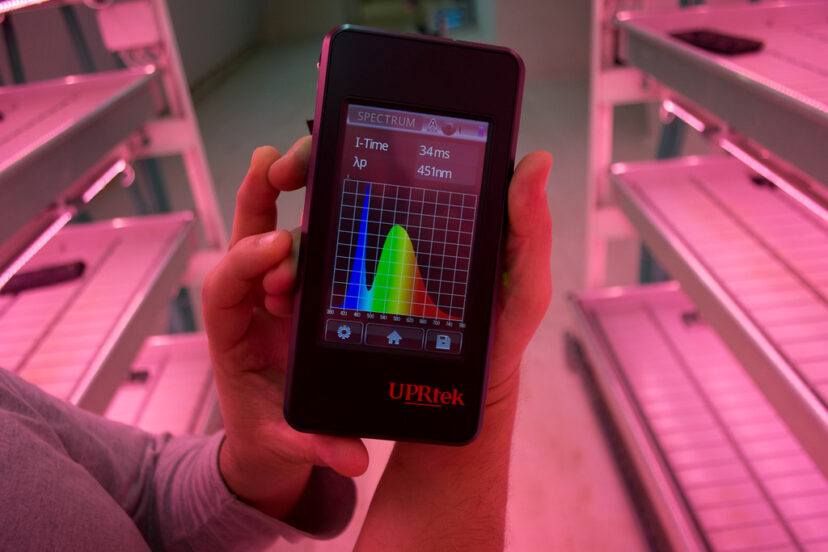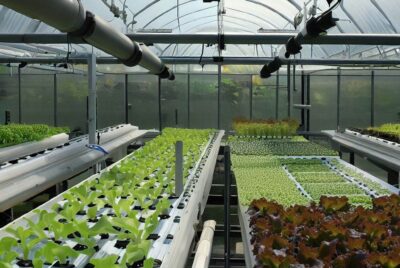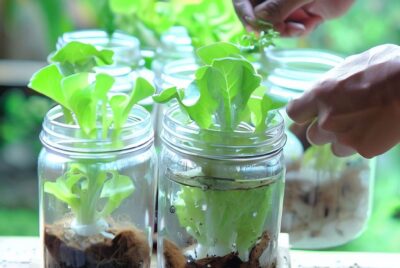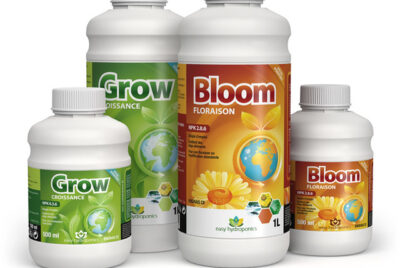Hydroponic Grow Lights – What You Need to Know
*We may earn a commission for purchases made using our links. Please see our disclosure to learn more.
When it comes to hydroponic gardening, one of the key elements to consider is the lighting setup. In indoor environments, where natural sunlight is limited, hydroponic growers rely on artificial grow lights to provide the necessary light energy for plant photosynthesis. As an enthusiast and knowledgeable person in hydroponics, I understand the importance of hydroponic grow lights in ensuring optimal plant growth and yield. In this article, I will guide you through everything you need to know about hydroponic grow lights, providing helpful suggestions and reasons for my recommendations.
Understanding Hydroponics
Hydroponics is a method of gardening that eliminates the need for soil by growing plants in a nutrient-rich water solution. This soil-less cultivation allows for precise control over the growing conditions, making it ideal for indoor gardening. In a hydroponic system, grow lights play a vital role in simulating natural sunlight, which is essential for photosynthesis—the process by which plants convert light energy into chemical energy to fuel their growth.
Importance of Hydroponic Grow Lights
The significance of hydroponic grow lights cannot be overstated. Since indoor hydroponic gardens lack access to natural sunlight, grow lights serve as the primary source of light energy for plants. They enable gardeners to cultivate plants year-round, regardless of the external weather conditions. By providing the right spectrum and intensity of light, grow lights ensure that plants receive the necessary energy to carry out photosynthesis and thrive in the controlled environment of a hydroponic system.
Types of Hydroponic Grow Lights
There are several types of grow lights available for hydroponic gardening, each with its own set of advantages and considerations. The most common types include LED (Light Emitting Diode), fluorescent, and high-intensity discharge (HID) lights.
LED grow lights are known for their energy efficiency, longevity, and versatility. They produce a targeted spectrum of light, allowing growers to customize the light output according to the specific needs of their plants. LED lights also generate less heat, reducing the risk of heat damage to plants and enabling growers to position the lights closer to the plant canopy.
Fluorescent lights, such as T5 or compact fluorescent lights (CFL), are affordable and suitable for small-scale hydroponic setups or seedlings. They emit a balanced spectrum of light, making them suitable for a wide range of plant species. However, they are not as energy-efficient as LED lights and have a shorter lifespan.
HID lights, including metal halide (MH) and high-pressure sodium (HPS) lights, have been traditionally used in hydroponics. They provide high-intensity light output, making them suitable for larger grow spaces and mature plants. However, HID lights consume more energy and produce more heat, requiring additional cooling measures to prevent overheating.
Factors to Consider When Choosing Grow Lights
Choosing the right grow lights for your hydroponic system is crucial for the success of your indoor garden. Here are some factors to consider when selecting grow lights:
- Light Intensity: Different plants have varying light intensity requirements. Leafy greens, such as lettuce or herbs, can thrive with lower light levels, while fruiting plants, like tomatoes or peppers, require higher light intensities. Consider the light intensity requirements of your specific plants and select grow lights that can deliver the necessary amount of light.
- Light Spectrum: The spectrum of light emitted by grow lights affects plant growth and development. Red and blue light wavelengths are essential for photosynthesis, while other wavelengths contribute to specific plant processes. Full-spectrum LED lights provide a balanced spectrum that closely resembles natural sunlight, promoting overall plant health and productivity.
- Energy Efficiency: Energy efficiency is an important consideration to reduce operational costs and minimize environmental impact. LED grow lights are highly energy-efficient, consuming significantly less power than other types of lights. Look for grow lights with high energy efficiency ratings or Energy Star certification to ensure optimal energy usage.
- Cost: The initial cost of purchasing grow lights is a factor to consider, but it’s also essential to evaluate the long-term cost implications. LED lights may have a higher upfront cost compared to other options, but their energy efficiency and longer lifespan can result in significant cost savings over time.
- Durability and Lifespan: Consider the durability and lifespan of grow lights. LED lights generally have a longer lifespan, ranging from 50,000 to 100,000 hours, while fluorescent and HID lights have shorter lifespans. Investing in high-quality grow lights ensures longevity and reduces the need for frequent replacements.
Light Spectrum and Plant Growth
The spectrum of light emitted by grow lights plays a crucial role in plant growth and development. Different wavelengths of light have varying effects on specific plant processes. For instance, red light promotes flowering and fruiting, while blue light stimulates vegetative growth. Full-spectrum LED lights encompass a broad range of wavelengths, including red, blue, and other colors, providing a balanced spectrum that supports overall plant health and growth.
It’s important to understand the specific light requirements of your plants at different growth stages. Seedlings and young plants benefit from higher levels of blue light, as it promotes robust leaf and stem development. As the plants transition to the flowering or fruiting stage, a higher ratio of red light helps stimulate flower and fruit production. Adjusting the light spectrum based on the growth stage of your plants can maximize their productivity.
Determining Light Intensity
Light intensity, measured in photosynthetic photon flux density (PPFD), refers to the amount of light energy reaching the plants’ leaves. Determining the appropriate light intensity for your hydroponic garden depends on the specific plants you are growing and their growth stage.
Leafy greens and herbs generally require a PPFD of around 200-400 μmol/m²/s, while fruiting plants may need higher intensities ranging from 400-800 μmol/m²/s. It’s crucial to monitor the PPFD using a light meter or by referring to the manufacturer’s recommendations for the specific grow lights you are using. Adjust the hanging height of the lights or use dimming features if available to achieve the desired light intensity for optimal plant growth.
Light Duration and Photoperiod
Light duration, or photoperiod, refers to the length of time plants are exposed to light each day. The duration of light exposure depends on the plant species and the growth stage. Most plants require a period of uninterrupted darkness to rest and undergo essential physiological processes.
As a general rule, leafy greens and herbs can thrive with 12-16 hours of light per day during the vegetative stage. When transitioning to the flowering or fruiting stage, some plants may benefit from a reduced photoperiod of 10-12 hours of light per day to induce flowering. It’s important to research the specific light requirements of your plants and adjust the light duration accordingly to mimic their natural growth cycles.
Positioning and Hanging Grow Lights
Proper positioning and hanging of grow lights ensure uniform light distribution and prevent issues such as light burn or insufficient lighting. Consider the following tips when setting up your grow lights:
- Adjustable Hanging Height: Most grow lights come with adjustable hanging mechanisms or adjustable brackets. This allows you to modify the distance between the lights and the plant canopy as the plants grow. Start with a hanging height of around 12-18 inches and monitor the plant response. Adjust the height accordingly to maintain an optimal light distance.
- Light Spread and Coverage: Different types of grow lights have varying light spread characteristics. LED lights usually have a wider light spread, while HID lights have a more focused beam. Position the lights in a way that ensures even coverage across the entire plant canopy. Avoid creating hotspots or areas with insufficient light by adjusting the hanging height and angles of the lights.
- Reflective Surfaces: Utilize reflective surfaces or materials to enhance light distribution and reduce wasted light. Mylar or reflective films can be applied to the walls or surfaces surrounding the plants to redirect the light back onto the plants. This helps maximize light penetration and reduces the need for additional lights.
- Light Angle: Consider the angle at which the light hits the plants. Most grow lights have a wide beam angle, but it’s still important to position them in a way that directs the light downward onto the plants’ leaves. This ensures optimal light absorption and minimizes light loss.
Maintaining and Replacing Grow Lights
To ensure the longevity and optimal performance of your grow lights, regular maintenance and, if needed, replacement are necessary. Here are some maintenance tips:
- Cleaning: Dust and dirt can accumulate on the surface of grow lights, reducing light penetration. Regularly clean the lights using a soft cloth or a gentle brush to remove any debris. Ensure the lights are turned off and cool before cleaning to avoid any electrical hazards.
- Monitor Light Output: Over time, the light output of grow lights may degrade. Monitor the light output using a light meter or by observing the growth response of your plants. If you notice a significant decrease in light intensity, it may be time to replace the lights.
- Replace as Needed: Different types of grow lights have varying lifespans. LED lights generally have a longer lifespan compared to fluorescent or HID lights. Follow the manufacturer’s recommendations for the specific grow lights you are using and replace them when necessary.
- Upgrade Technology: As technology advances, new and more efficient grow lights may become available. Stay informed about the latest developments in grow light technology and consider upgrading your lighting system if it offers significant benefits such as increased energy efficiency or improved light spectrum.
Conclusion
In conclusion, hydroponic grow lights are essential for indoor gardening success. They provide the necessary light energy for plant photosynthesis, enabling year-round cultivation and optimal growth. Consider the specific light requirements of your plants, including light intensity, spectrum, and duration, when selecting and positioning grow lights. Regular maintenance and monitoring of light output are crucial to ensure the long-term performance of the lights. By understanding the role of grow lights in hydroponics and implementing proper lighting techniques, you can create an environment where your plants thrive and flourish.
FAQs
Q1: Can I use regular household lights for hydroponic gardening?
Using regular household lights for hydroponic gardening is not recommended. Regular lights are designed for general illumination and do not provide the specific spectrum and intensity required for optimal plant growth. Invest in specialized hydroponic grow lights to ensure the best results.
Q2: Can I use grow lights for other types of indoor plants?
Yes, grow lights can be used for other types of indoor plants, such as houseplants or succulents. Adjust the light intensity and duration based on the specific light requirements of the plants you are growing.
Q3: Can I use a combination of different types of grow lights?
Yes, it is possible to use a combination of different types of grow lights to provide a balanced light spectrum and meet the specific needs of your plants. LED lights are often used in combination with fluorescent or HID lights to achieve optimal lighting conditions.
Q4: Are hydroponic grow lights expensive to operate?
Hydroponic grow lights, especially LED lights, are energy-efficient and cost-effective to operate. They consume less energy compared to traditional lighting options, resulting in lower electricity bills and reduced environmental impact.
Q5: How often should I replace my grow lights?
The lifespan of grow lights varies depending on the type and quality of the lights. LED lights can last for tens of thousands of hours, while fluorescent or HID lights typically have a shorter lifespan. Monitor the light output and follow the manufacturer’s recommendations for replacement intervals. Replace the lights if there is a significant decrease in light intensity or if they reach the end of their lifespan.




